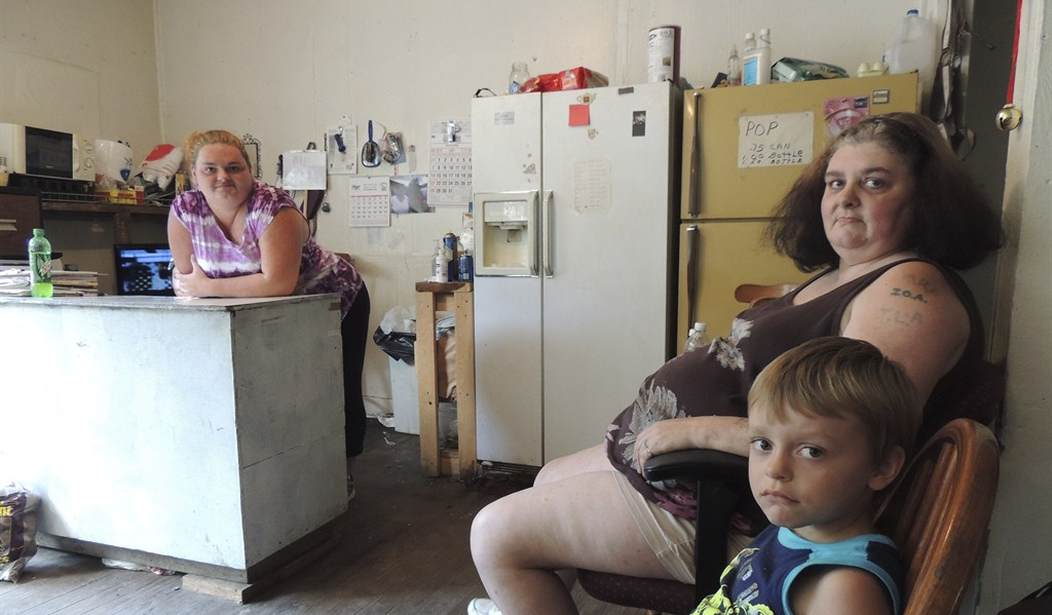As budget negotiators lurch toward their December 13 deadline for funding the government, another conference committee is struggling to reach an agreement over the farm bill. Unsurprisingly, the dispute is not over the bill’s completely unjustifiable subsidies for agribusiness (both parties support those) but food stamps.
House Republicans passed a bill calling for $39 billion in reductions in the planned budget for food stamps (technically known as the Supplemental Nutrition Assistance Program, or SNAP) over the next ten years. A bipartisan Senate bill included just $4 billion in cuts. A couple of weeks ago it looked like negotiators were ready to settle on roughly $10 billion, but now it looks like that agreement has fallen through, at least for the moment.
The timing for the negotiations happens to be problematic, coming during the holiday season and shortly after the 2009 stimulus’s temporary increase in SNAP benefits expired on November 1. Those extra benefits, incidentally, expired in part because the Obama administration diverted some of the funds to other projects, including Michele Obama’s anti-obesity efforts.
Democrats and the media are raising the usual outcry over Republican hard-heartedness and suggesting that the proposed Republican cuts will lead to widespread hunger and hardship. Most of the handwringing is based on myths. Among them:
The massive increase in food-stamp spending was caused by the recession, so cuts are insensitive to economic reality. The food-stamp program certainly has exploded in the weak economic years since 2009, from 33.5 million beneficiaries at a cost of $53.6 billion a year to 47.7 million beneficiaries at a cost of $82.9 billion. Much of that increase was indeed due to the recession and increased unemployment. But the growth in food stamps actually started long before the recession began — under George W. Bush, in fact. President Bush nearly doubled both the program’s cost and the number of recipients.
Recommended
In addition, studies show that the increase in food stamps was much greater during this recession than in previous ones, suggesting that at least some of the increase was due to policy decisions rather than economic conditions.
The CBO projects that long after the recovery solidifies and unemployment declines, both costs and participation will remain at much higher levels.
Food stamps keep Americans from going hungry. It’s hard to imagine that the government could spend almost $83 billion per year without having some impact on hunger in America. Yet there is little real evidence that it does. The Government Accountability Office (GAO) found that “the literature is inconclusive regarding whether SNAP alleviates hunger and malnutrition for low-income households.” Similarly, a study for the U.S. Department of Agriculture found that for nearly all vitamins, minerals, and macronutrients assessed, the dietary intake among SNAP participants was comparable to that of nonparticipants in similar situations.
Food stamps are just a temporary safety net, not a form of dependency. No one wants to deny children, the elderly, or the disabled some temporary assistance to help them get through hard times. But the evidence suggests that for many recipients food stamps are becoming not a temporary safety net but a way of life.
Nearly 56 percent of SNAP households are on the program for five years or longer. And roughly 4.5 million recipients are able-bodied adults. In 2011, the most recent year for which data is available, only 27.7 percent of nonelderly adult participants were employed, while just another 28 percent reported that they were looking for work. Importantly, one of the largest “cuts” that Republicans have proposed is simply to restore the program’s work requirements.
Food stamps are effective economic stimulus. Led by Mark Zandi and other Keynesian economists, food-stamp advocates have made wildly exaggerated claims about the program’s role in stimulating the economy. Zandi, for instance, claims that “extending food stamps is the most effective way to prime the economy’s pump.”
But aside from the fact that those economic models just as well predict an alien invasion would be a boon to the economy, there is little evidence to support the theory. Even the Agriculture Department’s own inspector general concluded that it was unable to determine whether the additional dollars in the stimulus’s food-stamp expansion were in any way effective in meeting the 2009 Recovery Act’s goals. Three of the four performance measures the program was supposed to use, the office found, “reflected outputs, such as the dollar amount of benefits issued and administrative costs expended” and did not provide any insight into outcomes.
On the other hand, we do know that a failure to get government spending under control will have long-term economic consequences. Food stamps are hardly the major cause of deficits and debt — that distinction lies with middle-class entitlements such as Social Security and Medicare — but every little bit helps.
The Republican proposals would slash benefits. The proposed Republican cuts would reduce food-stamp spending over the next ten years relative to the projected budget by just 5 percent. Even after the cuts were fully phased in, spending would remain higher than it was in 2010. Slashing this is not.
But more importantly, most proposed cuts don’t actually reduce benefits. For example, as noted above, one Republican proposal would simply restore work requirements. Some worry that recipients might not be able to find jobs. Fair enough. But recipients could also satisfy those requirements through job training or job-search programs or by participating in volunteer and charitable activities. That doesn’t seem all that onerous.
A second Republican proposal would eliminate so-called “categorical eligibility,” which makes people eligible for food stamps if they participate in other welfare programs. Republicans would target food stamps to the truly needy by restoring the programs income and asset tests. How cruel.
The one proposal that could actually be considered a benefit cut, rather than an eligibility adjustment, is closing the LIHEAP loophole, which allows states to increase benefits for individuals who also receive government utilities assistance. Approximately 16 states have used this loophole to leverage nominal (often as little as $1) LIHEAP payments into an increase in a household’s SNAP benefits. Proposed reforms would set a $20 LIHEAP threshold before increased benefits kick in. That could be a modest benefit cut perhaps, but it is supported by Senate Democrats.
One can question the political wisdom or necessity of picking a fight over food stamps right now. But if we’re going to debate the issue, it would be helpful to debate facts rather than rhetoric.
This article appeared in National Review (Online)

























Join the conversation as a VIP Member